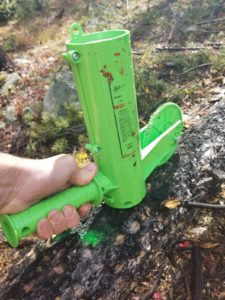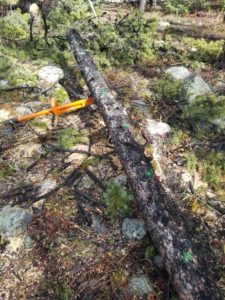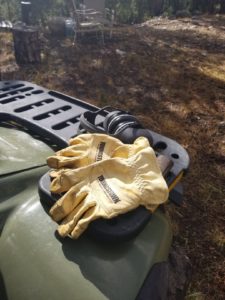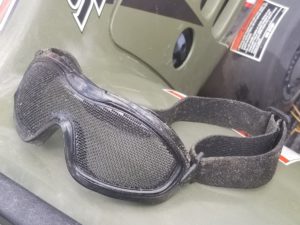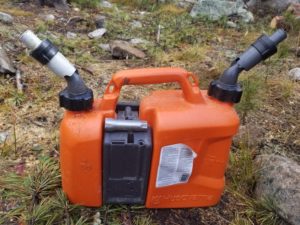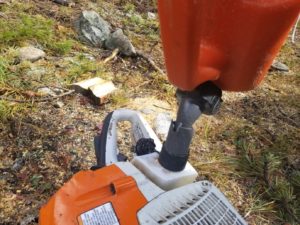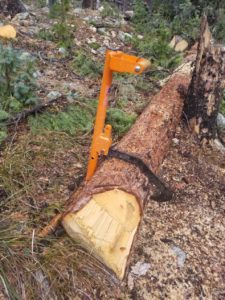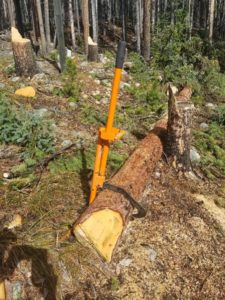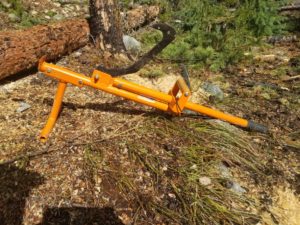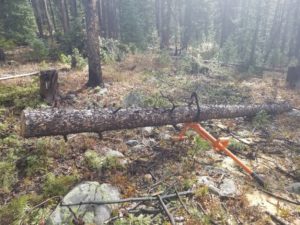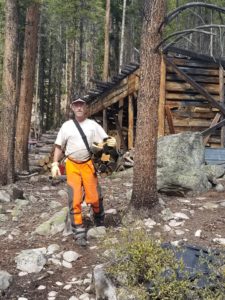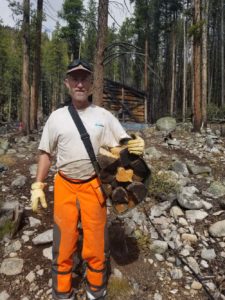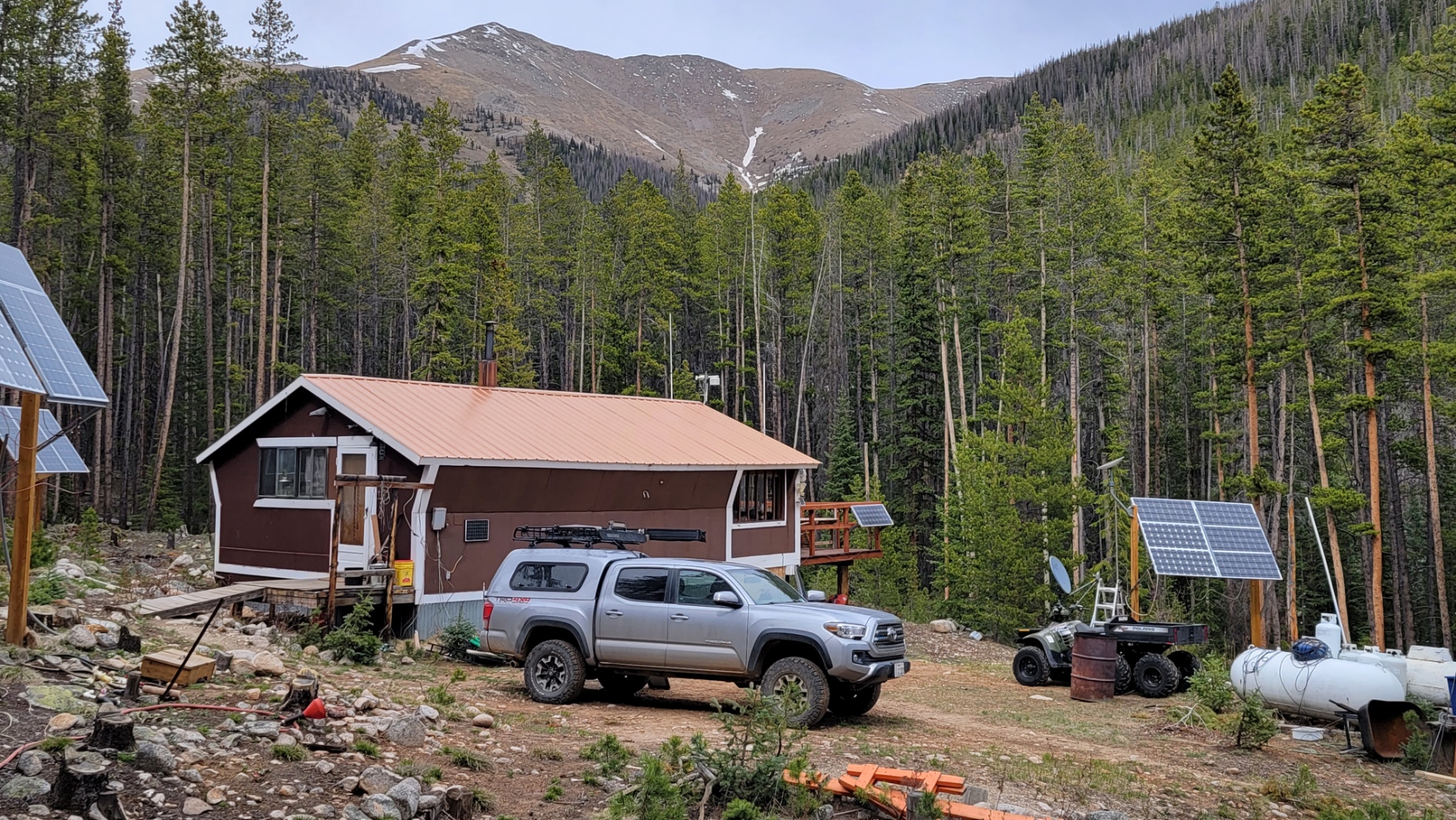Logging Made Easy(ier)
Off Grid CTO: Logging Made Easy(ier)
Welcome to the long overdue next edition of Off Grid CTO, where I talk about living life off the grid while working as the Chief Technology Officer of ModelOp, a great software company creating advanced software to manage both your ML/AI models, as well as your traditional models as well. If you get the chance, checkout my ongoing masterclass series on our product.
It’s been a very busy summer up here. The summers are amazingly short, and very busy. There are a ton of projects to get done before the snow flies, and the road shuts down for the season. It constantly feels like you are behind and catching up, but I did get a lot of cool projects done this summer, which I will go into in another post.
The one constant is the need for firewood for heat. We pretty much use wood year round to heat the place, just a lot more in the winter, and a lot less in the summer. Most mornings require at least a few logs to get rid of the night’s chill. As the leaves have turned yellow and are falling off the tree, the reminder that all the wood must be done becomes more and more urgent.
Over the years, I have used quite a few different tools to make the collection of all of that wood better, and I thought I would share the tools that I have found make the biggest difference. Once again I will be mentioning products that I have purchased and used here, but want to remind everyone that I have received nothing in return for these. It’s just stuff I found works….

Jim Olsen – Off Grid CTO
“Measure twice, cut once” — Historical Proverb
Getting the Length Right
For years and years when cutting out the individual lengths of logs, I would just kind of eyeball it and have it ‘about right’. This lead to sloppy stacks of wood, pieces too long to fit in the wood box, and just overall an inconsistency that was done quickly, but I paid for down the line. There had to be better way.
There were bars of your desired length that you could stick on the side of your saw blade, or the saw itself, that really just got in the way if you were actually working out in the woods. I found them to be more of a hazard than a help. Then I came across this great little device.
It’s the Mingo Firewood Marker. You can get different size wheels for different lengths, but I just use the standard 16 inch wheel. It takes a standard can of road marking paint you place into the top, and you push the device along the log. Every 16 inches I will get a dot on the log. This gives me my standard firewood length. Nine dots gives me the maximum my sawmill will handle, so I can rapidly cut each length.
Once I have all the trees down and limbed, I simply go mark all of them in advance, then can just quickly move through them cutting perfect lengths every time. No more guesswork and I end up with near perfect log piles.
Protecting Oneself
Dealing with chainsaws, falling trees, undergrowth, and all of the other things just waiting to cut you in the woods is just a reality of logging. You must have reliable safety gear, and ones that don’t get in your way and let you get the job done. Amazingly, finding good items is way harder than it looks. The standard stuff is often way too bulky, and just does not last. I’ve made tow recent additions that have both been winners.
Gloves… It would seem they have been made for years and it should be easy to find quality ones that protect your hands and last. But oddly, that is not the case. I have burned through I don’t know how many pairs of gloves that last maybe two weeks at best doing logging work. I’ve used everything from Stihl branded gloves, Carhart gloves, generic cheap gloves, you name it. They all fail typically within a couple of weeks at best.
The first gloves I have gotten that so far have lasted over a month are Livingston Linesman gloves. They are made for people putting in powerlines, so you get the idea they must be rugged. They have now lasted me a month and a half and have not shown signs of quitting yet, so I believe I may have found something of quality. You pay more for them for sure, but buying a pair every other week gets very expensive quick, so I am hoping these ones last. These are the winners of the glove war so far up here, as logging is rough on gloves, and even worse on your hands if you don’t wear them.
Eye protection is also key up here. Sticks fly, woodchips sail through the air, and it is really easy to walk into a branch. Protecting your eyes is a must. I’ve used traditional safety glasses, and they were all just fine, but they shared one flaw. Woodcutting is hard work, and you sweat. Those glasses then completely fog up, and I can’t see a darn thing, and that sure isn’t safe when carrying a running chainsaw.
I ran across these mesh safety glasses, and found a winner. Think of it like a window screen with small enough mesh to keep stuff out. Fine sawdust can get through, but anything over that stays out, and zero fogging. Plus they are goggles, so nothing gets around the sides. So now I can see no matter how hard I get working.
“I will say that I cannot imagine any condition which could cause a ship to founder. I cannot conceive of any vital disaster happening to this vessel. Modern shipbuilding has gone beyond that.” — Captain EJ Smith of the Titanic just before it set sail
“Our culture runs on coffee and gasoline, the first often tasting like the second.” — Edward Abbey
My Kingdom for a Decent Gas Can
Another thing that has really gone downhill over the years is the quality of gas cans. They have added all of these ventless features which are supposed to help the environment, but yet when you try and fill a small engine with them, there is zero way they will not spill fuel all over the woods, or leak when in the back of the ATV. I think for light use they might be better, but I am not really OK with spilling gas all over the place. I just can’t imagine it is a net positive.
So low and behold I finally found the absolute best gas can for filling a chainsaw. It is made by Husqvarna specifically for chainsaws, and is unfortunately not for sale in the US so you have to order from overseas, despite the fact it is still ventless. So given that, it is the most expensive gas can I have ever bought, but I do have to say it is worth it.
It comes with two sides, one for bar oil and another for the gas. The neat part is it completely seals, yet has special fillers that you just push down on the gas tank hole with and it automatically fills it near to the top and stops pouring. Thus you never spill a drop.
Add onto that the storage areas for your scrench, files, and wedges, and it makes an easy to carry package that does not spill and is built like a tank. It all goes back to my saying that I’d rather spend three times as much and never have to replace it then cheap out and struggle with it every day. Some things are just worth the extra money.
Saving Your Back
One of the toughest parts of woodcutting out in the forest is that there is never a perfect place to drop that dead tree. It will inevitably end up stuck up against rocks, stumps, or other items which will make actually cutting it into pieces way harder than you would like. Over the years, I have just muscled my way through it, but as I am getting a bit older, I feel the results of that for longer. It was time to take some mechanical advantage of those logs.
There are many cheap versions of different tools to move logs out there that are single purpose. Typically a timberjack and a cant hook are the primary tools. But carrying around an array of tools in the woods becomes cumbersome, and I wanted something built to last, not an imported knock off that breaks in the field. Enter the LogOx….
It is three tools in one. It is a log hauler, a cant hook, and a timberjack all in one unit that rapidly switches between those tools. It is made in the US and is very well built of high quality materials. It is clearly a tool built to last.
As a log hauler, as in the first picture, it can easily be used to move a log away from a stump or other obstruction without completely messing up your arms, which my wife can attest to that I used to do often. It gives just a little leverage in that it is easy to lift with your legs instead of your back.
As a cant hook, you basically add a long handle to the log hauler. This gives you a bit of leverage to roll a very large log without nearly as much effort on your part. This is handy in those stump situations as well.
“Give me a lever long enough and a fulcrum on which to place it, and I shall move the world.” — Archimedes
Lifting the Logs
In the LogOx’s final configuration, you add a leg onto the bottom of the cant hook allowing you to create a timberjack for lifting the logs off of the forest floor in order to cut the individual rounds.
Strictly, this is not necessary as you can cut part way through and roll the log, or use another piece of wood and put it up on that, but in practicality using this tool saves your back, and your chains from ground strikes, which instantly dull the blade.
You simply position the cant hook over the log, pull back on the handle to lift and roll the log up onto the back and the log will be held in place above the ground.
Then you simply cut your rounds off on the marks you previously made with the marking tool, and lift the lever and roll the log back down to the ground. Simply move further down the log, and repeat. I have lifted very large logs with this without any strain on my back. A huge difference.
I can’t speak highly enough of this single tool. You pay a premium for it, but it really is high quality, and three tools that I now use all of the time. As I said before, I prefer to spend once on a quality tool and use it for the rest of my life.
Carrying the Load
Finally, after you have nicely stacked all of that wood you cut in the woodshed, and you are ready to use it, there is the task of carrying the wood into the cabin to actually finally use it. This is the about sixth and final time you will carry that wood, and using a traditional wood carrier is still a heavy task on your arms and back. Both your hands will be full, and opening the door is no pleasant task. In the middle of winter, you will do this several times at least.
When I was buying the LogOx tool, I saw they offered a really nice looking log carrier with a different take on it. Then I looked at the price and balked a bit about how a log carrier could cost that much… Well after a few more times of my back hurting, and a coupon from the manufacturer, I decided to go for it.
What makes it different is it is built like a sling rather than a carrier. So a strap goes over your neck/shoulder and carries the weight there, and your arm goes through a pocket on the other side, which leaves you an entire arm free to open doors and load it up, rather than throwing it on the ground.
So now the weight is on my shoulders, it never touches the ground and you load it right on yourself. Honestly the weight is very minimal in this configuration, and it really turned out to be worth the money. BTW, it is a really high quality build too, so hats off to them. I do wish it were just a bit cheaper, but I do expect to use this for a very long time as well.
“It’s not the load that breaks you down, it’s the way you carry it” — Lena Home
“I would rather sit on a pumpkin and have it all to myself, than be crowded on a velvet cushion.” — Henry David Thoreau
Heading into Fall
Fall is happening fast up here. Many of the projects for the summer have been completed, some of them will remain until next summer, but it is a time to rush and finish up what HAS to be done. Then comes the calm of winter where many of the projects will be buried deep underneath the snow.
It is a reflective time as well to look back and enjoy the accomplishments that have been made and recognize how much we really did get done up here, even though not everything got done. It is a time to relish in the idea of warm evenings by the fire and enjoying all of this work we put in.
In the next post, since I got so far behind in posts, we will catch you up with the major projects that were completed over the summer. Some were simple, and some were quite impressive (like a whole new roof in a long weekend).
So join me next time for a summer in review!
Jim Olsen, Off Grid CTO

